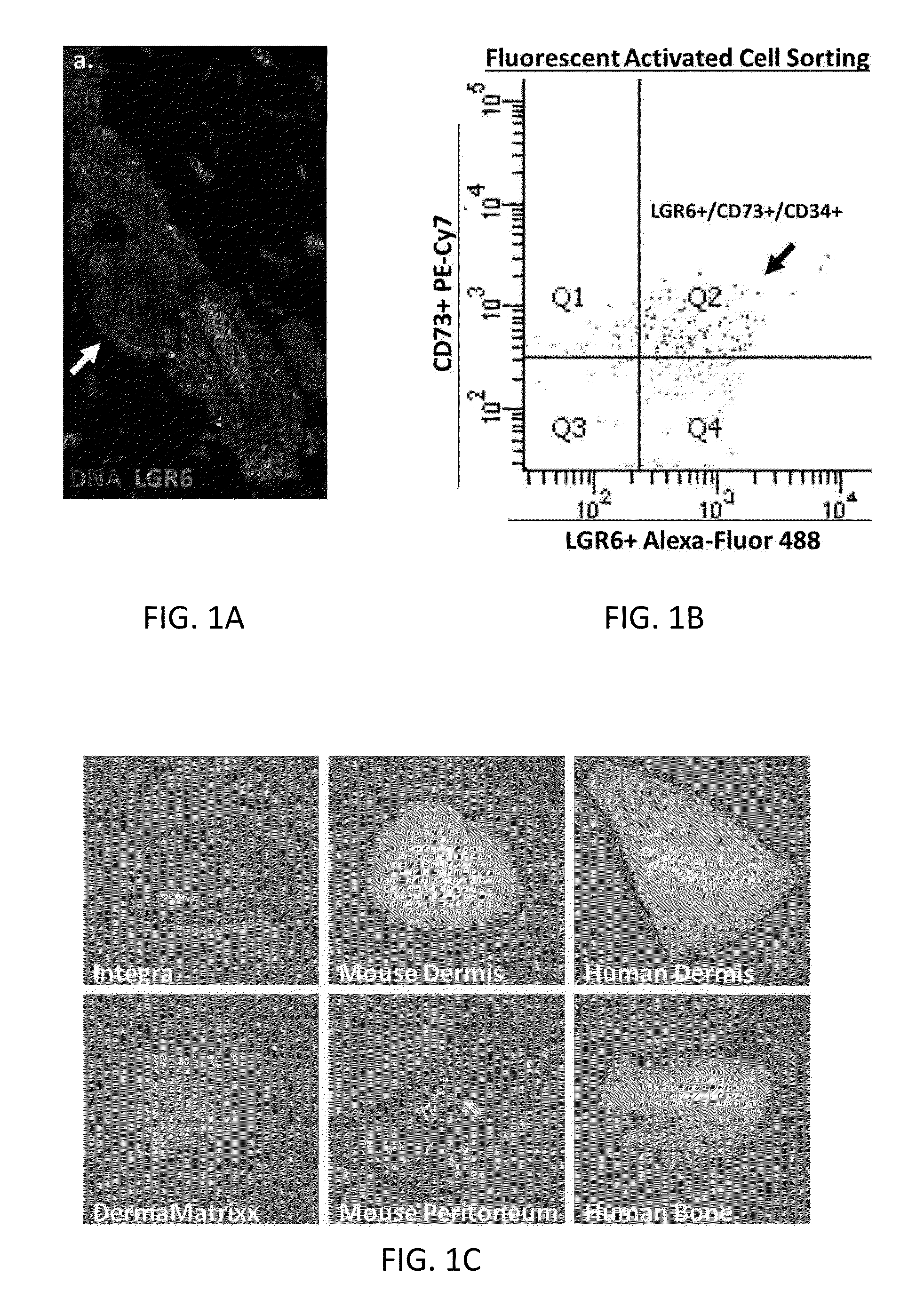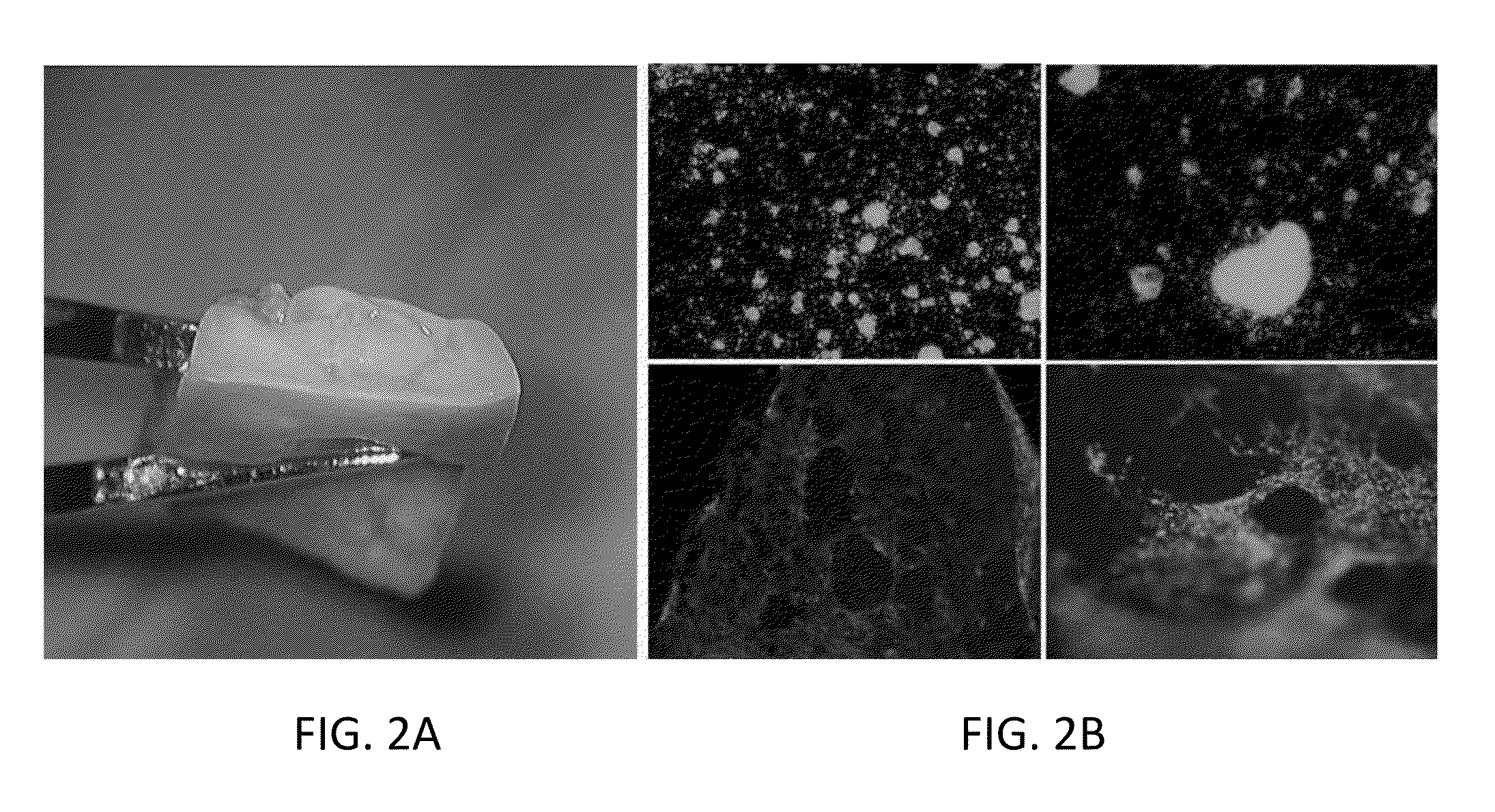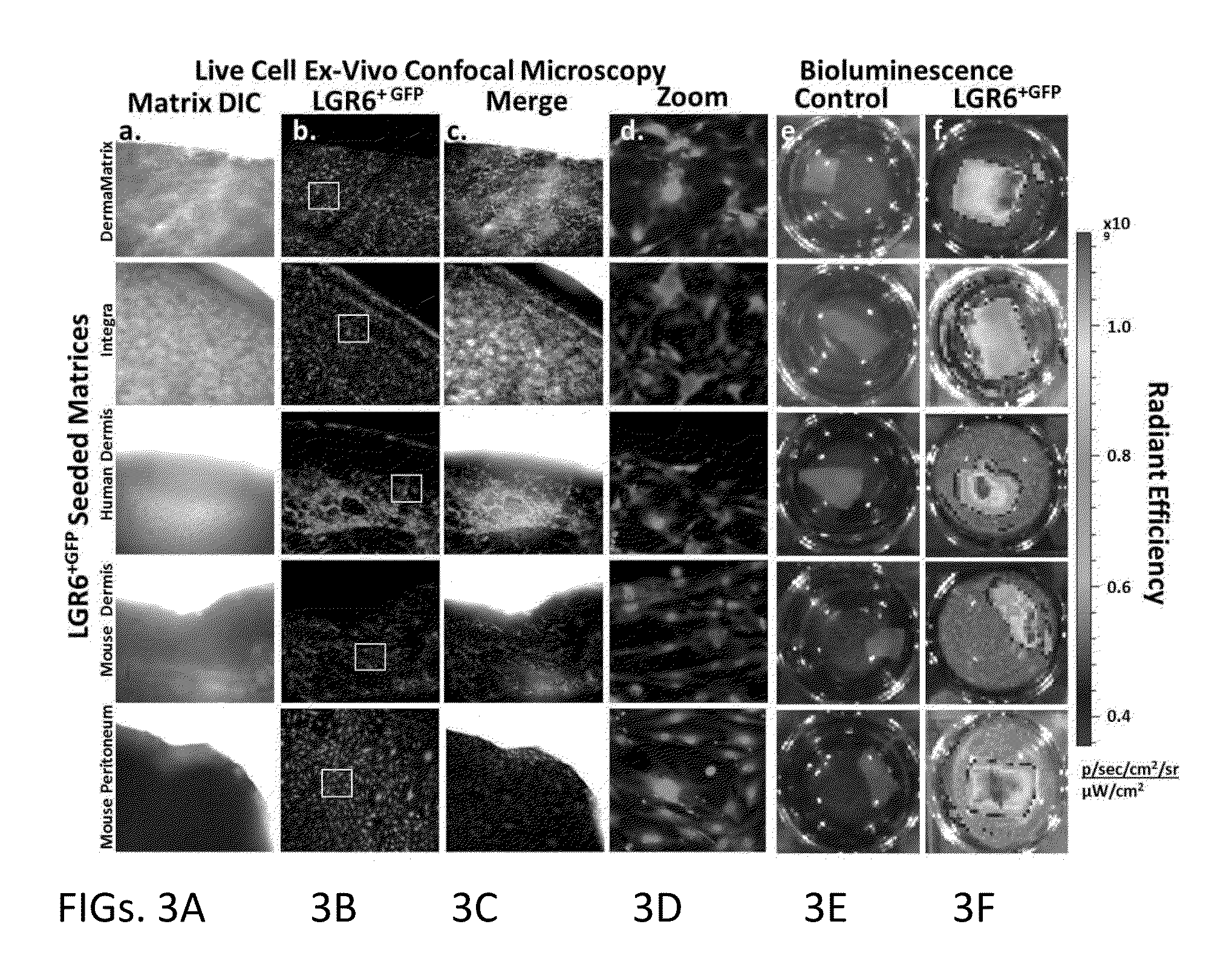Methods for Development and Use of Minimally Polarized Function Cell Micro-Aggregate Units in Tissue Applications Using LGR4, LGR5 and LGR6 Expressing Epithelial Stem Cells
a function cell and micro-aggregate technology, applied in the field of constructs of micro-aggregate multicellular grafts, can solve the problems of complex full thickness injuries to human and mammalian tissues, complex injuries involving multiple tissue elements, and inability to produce viable and self-sustaining epithelial compartments, etc., to achieve the effect of stabilizing primary tissues and reducing the viability of micro-organisms during transport and processing
- Summary
- Abstract
- Description
- Claims
- Application Information
AI Technical Summary
Benefits of technology
Problems solved by technology
Method used
Image
Examples
example 2
[0148]Example 2 is directed to processing of hypodermis and subdermal fat cellular components. Example 2 recites the following steps:[0149]i. Spraying 70% ethanol (EtOH) on the outer side of the tissue container and placing the tissue container into laminar air flow cabinet;[0150]ii. Sending a sample of the tissue or transfer medium for microbiological testing;[0151]iii. Placing the previously washed adipose and hypodermal tissue in 150 mm sterile petri dish;[0152]iv. Washing the tissue two times with PRM;[0153]v. Trimming the tissue into small (3 mm) pieces with sterile surgical instrument and place into sterile culture holding dish containing pulse media while the dissection is completed;[0154]vi. Aspirating media from holding dish and removing the specimen with sterile scoop or forceps followed by placing the specimen into 50 ml conical tube containing MSC Enzymatic Digestive Media, a pre-mixed digestive enzyme solution (collagenase and dispase-based), which is placed into a 37° ...
example 3
[0164]Example 3 is directed to addition of hypodermis and subdermal fat components to the example of a construct according to an embodiment of the invention. The illustrative component addition example involves:[0165]i. Placing a sterile Nunc Skin Graft Cell Culture Dish or automated dish already containing the assembled and washed scaffold into a laminar flow hood and washing the scaffold again two times with pulse media prior to adding cells;[0166]ii. Inserting a label on each culture vessel with tracking number;[0167]iii. Transferring around 5×105 to 1×106 mixed SVF cells per dish system and 1×105 adipocytes per dish;[0168]iv. Adding a complete culture medium with or without autologous PRP as dictated by the particular requirements of a situation, to the loading reservoir;[0169]v. Transferring the dishes into an incubator onto slow rocker for 1 hour followed by removal therefrom and resting flat for 48 hours in separate sentinel incubator;[0170]vi. Washing the culture medium afte...
example 4
[0175]Example 4 concerns enrichment of the minimally polarized, epithelial stem cell singularity units.
[0176]Following Example 1, the MPFUs is placed in pulse rescue media in a 15 ml conical tube and spin / centrifuged into a soft pellet. The material is then subject to the following process of partial digestion:[0177]i. Obtaining a previously aliquoted frozen 10 ml digestion buffer (collagenase and dispase-based), which has been brought to room temperature prior adding to MPFUs;[0178]ii. Adding the digestion solution to the soft pellet of MPFUs and gently mixing, by flicking, the tube to allow MPFUs to distribute throughout the solution;[0179]iii. Placing the tube into 37° C. water bath or dry incubator for 10 minutes;[0180]iv. Removing the tube from the bath / incubator, gently flicking tube and examining the content for string;[0181]v. Having observed string, centrifuging the content into a soft pellet;[0182]vi. Washing the cell pellet in 5-10 mL complete Defined Keratinocyte SFM med...
PUM
 Login to View More
Login to View More Abstract
Description
Claims
Application Information
 Login to View More
Login to View More - R&D
- Intellectual Property
- Life Sciences
- Materials
- Tech Scout
- Unparalleled Data Quality
- Higher Quality Content
- 60% Fewer Hallucinations
Browse by: Latest US Patents, China's latest patents, Technical Efficacy Thesaurus, Application Domain, Technology Topic, Popular Technical Reports.
© 2025 PatSnap. All rights reserved.Legal|Privacy policy|Modern Slavery Act Transparency Statement|Sitemap|About US| Contact US: help@patsnap.com



